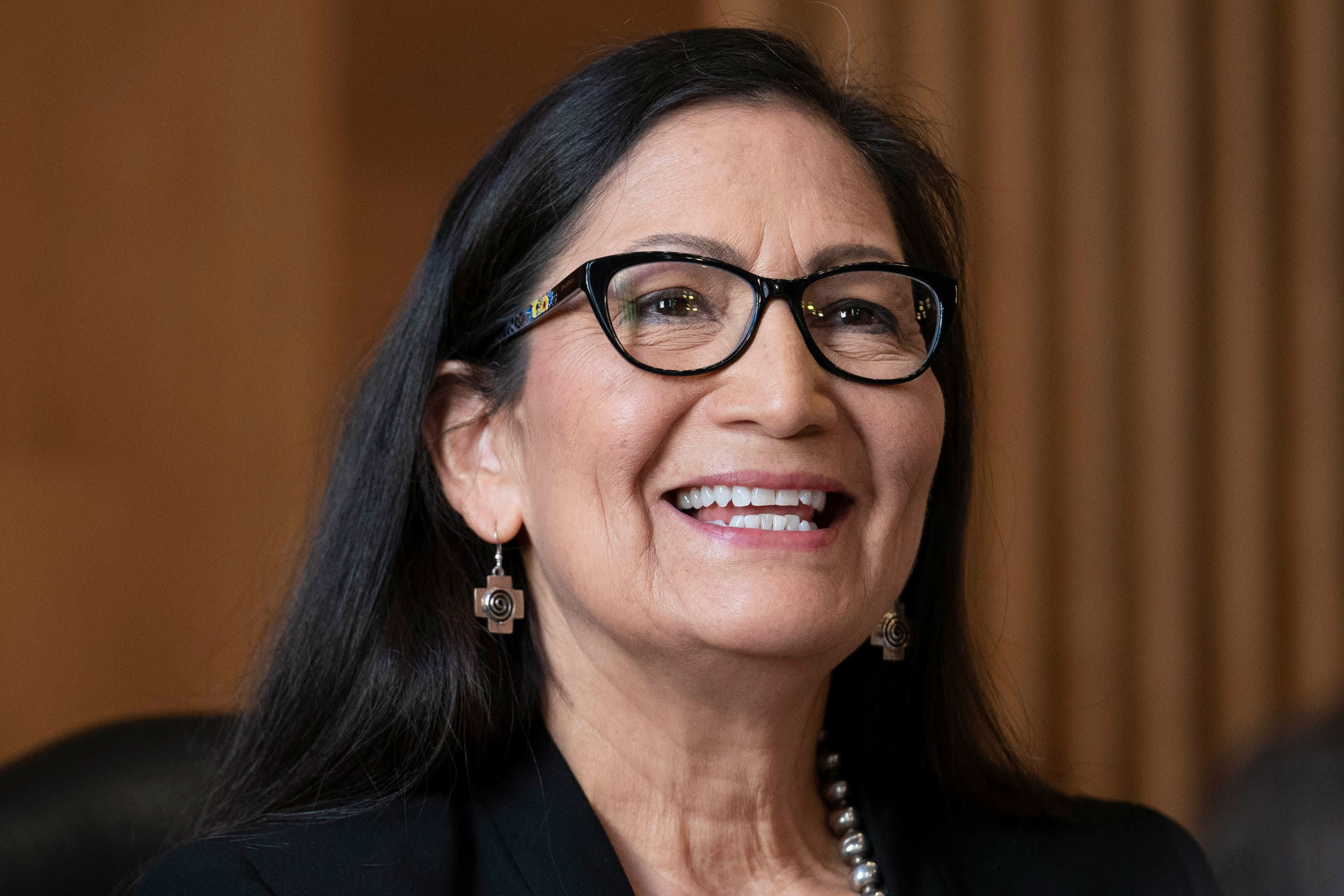
The Senate on Monday voted to confirm Rep. Deb Haaland, D-N.M., as President Joe Biden‘s secretary of the Department of the Interior, making the second-term Democrat the first Native American Cabinet secretary in U.S. history.
The vote was 51-40, with four Republicans joining Democrats in favor.
Haaland, an enrolled member of the Laguna Pueblo, earned bipartisan support to run the Interior department, which has a staff of 70,000 employees and is charged with overseeing the country’s natural resources. The agency manages nearly 500 million acres of land, or one-fifth of the surface area of the United States.
Haaland’s confirmation fills one of the few remaining vacancies in Biden’s Cabinet, nearly two months after he was sworn in. With most of the major posts now occupied, the outstanding positions include United States trade representative, Labor secretary, and Health and Human Services secretary.
“We’ve now made history twice in the last few minutes,” Senate Majority Leader Chuck Schumer, D-N.Y., said after the vote, noting that Haaland was the first Native American Interior secretary as well as the first Native American Cabinet secretary.
The confirmation marks a victory for progressives who championed Haaland’s nomination, including Sen. Elizabeth Warren, D-Mass. Haaland, a supporter of the Green New Deal, was one of the co-chairs of Warren’s 2020 campaign for president.
Republicans sought to wield Haaland’s progressive stances against her during her confirmation hearings last month. Sen. Steve Daines, R-Mont., pressed Haaland on her support for the Green New Deal and the declining number of jobs available in the fossil fuel industry.
“I believe there are millions of jobs in a clean energy future,” Haaland responded, in line with past statements from Biden. “If we can all work together I think we can do it all. I think we can protect our public lands and create jobs.”
Asked about her opposition to fracking on public lands, Haaland responded that if confirmed she would be supporting Biden’s agenda, not necessarily her own.
“President Biden does not support a ban on fracking, is my understanding,” she said.
During the hearing, Haaland emphasized her bipartisan credentials. In her first year in Congress, Haaland introduced more bills with a co-sponsor from another party than any other House freshman, according to GovTrack, which also rates her the 10th most politically left member of Congress.
The Energy and Natural Resources Committee voted earlier in March to advance Haaland’s nomination by a vote of 11-9, with Sen. Lisa Murkowski, R-Alaska, joining 10 Democrats in favor of her confirmation.
In a somewhat unusual maneuver, Haaland also touted the support of Rep. Don Young, another Alaska Republican, who introduced her to the committee.
“I have had her reach across the aisle to talk to me about Alaska. She’s bipartisan,” Young told lawmakers.
Murkowski, though she voted to advance Haaland’s nomination, was one of the apparent skeptics on the committee.
“I am going to place my trust in Representative Haaland and her team despite some very real misgivings,” Murkowski said.
The four Republicans to vote in favor of Haaland’s confirmation on Monday were Murkowski, Sen. Dan Sullivan, R-Alaska, Sen. Lindsey Graham, R-S.C., and Sen. Susan Collins, R-Maine.
Sen. Joe Manchin, the influential and closely watched moderate Democrat from West Virginia, also lent his approval. Manchin cited Young’s endorsement and said it was “long past time to give a Native American woman a seat on the Cabinet table.”
Haaland pledged at the hearing to work on repairing the U.S. federal government’s relationship with Native American tribes if confirmed. She pointed to her own story as an inspiration.
“If an Indigenous woman from humble beginnings can be confirmed as secretary of the Interior, our country holds promise for everyone,” she said.
Haaland is one of the first two Native American women elected to Congress, alongside fellow Democrat Sharice Davids of Kansas, a member of the Ho-Chunk Nation.
Subscribe to CNBC Pro for the TV livestream, deep insights and analysis on how to invest during the new presidential term.




